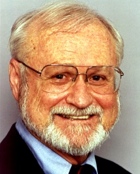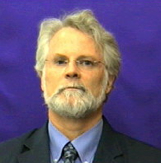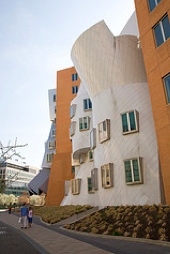HETL Note: We are pleased to publish part two of an interview with the distinguished researcher and internationally recognized innovator Professor Phillip Long who is interviewed by another distinguished educator and academic, Professor James L. Morrison. The interview provides an engaging perspective on the life of one of the most well-known computer science and engineering schools in the world – MIT. How to teach programming and how to develop programming skills in students are questions which educators still struggle to find the best answers to. You may submit your own article on the topic or you may submit a “letter to the editor” of less than 500 words (see the Submissions page on this portal for submission requirements). More details about Phillip Long’s career and achievements can be found at EDUCAUSE and his LinkedIn profile.
Since Professor Long’s interview on July 30, 2008, the introductory course in the Department of Electric Engineering and Computer Science (EECS) at MIT has been re-named “Introduction to EECS 1” and re-numbered 6.01. Several changes to the course have been implemented based on assessment studies, and the enrollment for the course has increased to approximately 500—nearly half the number of undergraduate students admitted to MIT in a given year. It should also be noted that the assessments cited in Professor Long’s interview were conducted by educational researchers associated with the MIT Teaching and Learning Laboratory.
 Author’s Bio: Dr. James L. Morrison is professor emeritus of educational leadership at the University of North Carolina at Chapel Hill. He served as vice president (Division J) of the American Educational Research Association and received the Distinguished Scholar Award from AERA’s Special Interest Group on Strategic Change. He served as consulting editor of The Review of Educational Research, The American Educational Research Journal, and the ASHE-ERIC Research Report Series and as founding editor of three peer reviewed publications: On the Horizon, The Technology Source, and Innovate. He is author and co-author of eight books and over 200 journal articles focusing on educational planning and on using information technology tools in educational organizations. He has made over 230 conference presentations and workshops around the world. For more details about Professor Morrison, see his full vita. Professor Morrison can be contacted at [email protected].
Author’s Bio: Dr. James L. Morrison is professor emeritus of educational leadership at the University of North Carolina at Chapel Hill. He served as vice president (Division J) of the American Educational Research Association and received the Distinguished Scholar Award from AERA’s Special Interest Group on Strategic Change. He served as consulting editor of The Review of Educational Research, The American Educational Research Journal, and the ASHE-ERIC Research Report Series and as founding editor of three peer reviewed publications: On the Horizon, The Technology Source, and Innovate. He is author and co-author of eight books and over 200 journal articles focusing on educational planning and on using information technology tools in educational organizations. He has made over 230 conference presentations and workshops around the world. For more details about Professor Morrison, see his full vita. Professor Morrison can be contacted at [email protected].
Patrick Blessinger and Krassie Petrova
~~~~~~~~~~~~~~~~~~~~~~~~~~~~
Technology Enhanced Active Learning in the Electrical Engineering and Computer Science Department at MIT
James L. Morrison and Phillip Long
 Dr. Phillip Long, the immediate past associate director of MIT’s Office of Education, Innovation, and Technology, is now serving as Professor of Innovation in Educational Technology in the Schools of Information Technology and Electrical Engineering and Psychology, and Director, Center for Educational Innovation and Technology, at the University of Queensland, Brisbane, Australia. In his former role at MIT, Dr. Long worked with faculty members and technologists to integrate innovative approaches into the MIT learning experience and provide support for the dissemination of these innovations around the world. Dr. Long continues to work at MIT as a visiting researcher in the Center for Educational Computing Initiatives, led by Professor John Belcher, who developed the TEAL initiative at MIT.
Dr. Phillip Long, the immediate past associate director of MIT’s Office of Education, Innovation, and Technology, is now serving as Professor of Innovation in Educational Technology in the Schools of Information Technology and Electrical Engineering and Psychology, and Director, Center for Educational Innovation and Technology, at the University of Queensland, Brisbane, Australia. In his former role at MIT, Dr. Long worked with faculty members and technologists to integrate innovative approaches into the MIT learning experience and provide support for the dissemination of these innovations around the world. Dr. Long continues to work at MIT as a visiting researcher in the Center for Educational Computing Initiatives, led by Professor John Belcher, who developed the TEAL initiative at MIT.
I had the opportunity to interview Professor Long at the 2008 Campus Technology Conference in Boston. The initial part of the interview, published in the April/May 2009 issue of Innovate, presented some of the outcomes of iCampus, a MIT/Microsoft Research collaboration that focused on building technologies that enabled more effective learning (Morrison & Long, 2009). In the remainder of the interview we focused on how the electrical engineering and computer science curriculum redesign project facilitated technology-enhanced active learning at MIT.
James L. Morrison [JLM]: Phil, tell us about the electrical engineering and computer science department at MIT.
Phillip Long [PL]: Programs at the School of Engineering at MIT are consistently ranked among the top programs in the world. The Department of Electrical Engineering and Computer Science (EECS) is no exception. The introductory class in this department, known as 6.001, The Structure and Interpretation of Computer Programs, is based on a very successful introductory textbook that’s been translated into over 140 different languages. (The book is freely available online from MIT Press.) It is an unusual department in that it integrates computer science and electrical engineering. Graduates from this program are disproportionately represented among the faculties of the top schools of engineering around the world. Hence, the impact of the department is widespread and influential.
JLM: When we talked earlier, you described the decision by the EECS faculty to redesign their entire curriculum in order to foster technology-enhanced active learning strategies. As I understand it, the courses produced by this department are among the most widely accessed and downloaded on MIT’s OpenCourseWare (OCW) initiative used by many institutions around the world as a model for teaching the fundamentals of computer science and electrical engineering. Why are they revising such a successful course of study?
PL: The original course was a traditionally structured lecture/lab/recitation course. Faculty thought that a more hands-on, engaged course would lead to better outcomes than one based on a preponderance of passive learning. Secondly, there was a recognition that this was an electrical engineering and computer science department. Separating the logic associated with understanding programming in computer science from its implementation and interaction with the physical world (which is electrical engineering) was doing a disservice to the students, who were in a joint, combined program. As a result, faculty began the process of redesigning the course. The new 6.001 was piloted and had its first major, large-scale implementation last term. We are just completing the analysis of student evaluation data for that term.
To address the issues they saw in the original course, faculty decided to have students program robots and deal with the messiness that this involves. The outcome of programmatic logic development is to make a robot, which is a physical device that has gears and motors and everything associated with ‘doing things’. A robot doesn’t behave like programs behave. When you tell a program that it has to iterate sixty times, every time you tell it to do that task, it does it exactly sixty times. If you tell a robot to go sixty meters forward, it doesn’t go sixty meters every single time. It goes 59.8; it goes 60.3. It’s not perfect. That feedback and that recognition of the complications of implementing a logical construct into a physical reality and dealing with the messy translation that results is important for students to grasp.
They also wanted to harness the powerful learning that takes place in peer-to-peer learning environments. One of the signature aspects of this course was that it had a one-to-four mentor-team ratio even though 260 students were registered in the pilot implementation. How? The course uses a four layered teaching model: senior faculty, graduate teaching assistants, learning lab assistants (undergraduate upper division students), and guest lab assistants (peers in the course who attend four hours of intensive instruction on a Wednesday night in preparation for the lab that is going to be taught on Thursday). Guest lab assistants teach as peers, as mentors to their team, on the assignment associated with that lab. The result is that every four students get a mentor or an assistant for the lab.
It was fascinating to watch the pilot course. Any new course development process is messy and sometimes stuff doesn’t work. Teaching staff had to fix the problems they found on Wednesday night with the lab that they were going to teach the following morning; the guest lab assistants were members of the team who were figuring out how to teach it. This is an incredibly powerful shift in perspective for those students, moving from being the recipient of the instructional process to working as a co-participant in its design and delivery. It opened up opportunities to scale a much more intimate small-group interaction that is otherwise not possible in the large-course delivery context.
In the data we collected during the first implementation last semester, we found that the guest lab assistants did not fare as well as graduate students in the eyes of other students in terms of the quality of instruction that they provided and their background, although the differences were not large. We consider this encouraging because the guest lab assistants never had any formal training. They participated in helping configure the lab in those Wednesday evening sessions, but no one had the time to consider the right approach for guest lab assistants to take with their peers.
One other thing that emerged from the preliminary data on the course outcomes was a positive correlation between prior programming experience and perceived success in doing coursework. This is an issue in part because, as the first course in the EECS curriculum, this class was designed with the hope that it would draw a wider spectrum of students to the discipline. If success in coursework is closely aligned with prior programming experience, we face a continuing challenge in meeting the goal of engaging those who haven’t arrived with strong computer science backgrounds.
JLM: How is the class technology enabled?
PL: With funding from the iCampus project sponsored by Microsoft, EECS faculty developed XTutor, an online intelligent tutoring system that provides students with carefully structured sets of questions that require students to write code. The core of the system consists of problems developed by faculty for students to work through. Students type in parts of computer code, subroutines for example, that represent the answer to a question posed by the problem. The system evaluates the response and provides immediate feedback, but not just a “right” or “wrong” response. If the response is wrong, XTutor supplies hints that attempt to correct misperceptions so that the student can amend the solution and resubmit the answer. Ultimately, how well the student does, how many hints he or she needed, and the student’s final assessment of the problem are all captured by the system for the instructor to use in evaluating student performance. By the way, although XTutor was specifically designed for this course, there is a layer of online tutorial capability that is accessible to anyone from around the world, as well. OCW provides the full content of the Structure and Interpretation of Computer Programs, Course 6.001.
The robots also add a technology dimension. Students use a variant of the Python programming language to write routines to control the robots, which are provided by the department. They have to control the robot’s behavior and get the robot to perform a set of project tasks. Course robots are programmed from students’ laptops. Students work on developing algorithms, routines, and processes that have to be implemented on the robot. It is very much a hands-on project.
JLM: You are talking about the redesign of the introductory course as opposed to the whole degree program.
PL: This is the first course in a sequence. The entire program is being redesigned. The next course in the sequence, which is now being taught in an active-learning, team-based studio, is going to present an interesting contrast to the first year program. While the first year program is very discovery oriented–there are assignments and such, how the students implement assignments is entirely up to the teams; the second course will be taught by a professor who has a set of materials that he wants students to learn and a particular approach that he wants them to follow. So, while the course shares in the active learning and collaborative design approach, there is much less student-initiated discovery. We will be curious to see how that approach marries into the sequence and what the student reaction to it is.
JLM: Phil, to put this in perspective, say that I accessed the introductory course via MIT’s OpenCourseWare initiative. What differences am I going to see in the course before and after the redesign?
PL: The original course was in a relatively traditionally organized course format. In the original 6.001 OCW course, you would see a series of lectures distributed in PDF from the course website. You would have available a set of narrated PowerPoint slides accessible to you from the XTutor intelligent tutoring system. Students taking the course at MIT met in twice-per-week recitation sections of 30-35 students to work on problem sets, ask questions, and generally get support on the course content. Finally, students worked on six major programming projects across the semester. In the early days of this course, there were experiments with eliminating the in-person lecture attendance and encouraging students to watch the lectures wherever they were from the XTtutor system. Interestingly enough, the students rebelled against that, saying, in effect, “By gosh, we came to this institution. We expect to see someone down at the podium. Where is that person? We are in the EECS department with all of these well-known, internationally recognized figures. I want to see them.” The compromise then was to have six to eight classroom lectures by star professors and everything else online. Eventually, the course design moved back to a regular lecture-recitation approach.
The redesigned version of 6.001 is heavily problem based with many more problem solving questions. We haven’t produced an OCW version of the redesigned course yet, since the first iteration only happened last term. However, in an OCW version, the viewer might see lectures on each topic, but of the five hours a week of class time, they will see only an hour or an hour and a half of a talking head. OCW users will see the problem and lab assignments and the materials associated with those activities. And that is going to be it. The transition to a more active learning approach is less amenable to online distribution, because we can only provide outlines of what we intend to happen; we can’t include what really goes on in the extensive period of team problem solving. The difference is that the expectation in the new 6.001 is that students must engage beyond problem sets, quizzes, and tests to produce code that programs the robots to perform certain tasks, and there is not necessarily a right way to do that. What happens and what makes the course work is the dialectic interaction that goes with those students working together to solve those problems.
JLM: I can see where professors could benefit by the original course lectures and materials in designing their own courses. How can they use the materials from a course that is based on an active learning problem solving approach? Will MIT professors take the time and energy to describe the logic, structure, and rationale of their course designs?
PL: This is a good question. The more interactive and discovery based the conduct of the course, the more the openly distributed materials must necessarily be guidelines and signposts. The faculty at MIT are keen on sharing their work in both research and teaching, but they have limits on their time, as well. More likely, as the course converges on a steady state, the artifacts that have gone into the planning and development of the course will be made available and a wider array of individuals knowledgeable about the program will be able to respond to initial inquiries about it. I think the people involved in this particular course are dedicated to sharing their work through OCW and other outreach efforts that characterize the open approach to sharing good teaching and research practice at MIT.
JLM: So MIT faculty actually view their courses as resources for the world?
PL: It’s one of the many interesting and wonderful characteristics of this place. When faculty here design a class, they don’t simply think about how they are going to do this class well. They think about how do they can do this class the best way that a class like this will ever be done and how to do it in a way that it can represent something of value to the world. It is remarkable, and it sounds amazingly egocentric, but you have to be in the room to hear the conversations to recognize that it is a really thoughtful and intentional way of approaching a course or curriculum design. They know that a lot of the courses taught in these departments are going to set standards or be looked upon as benchmarks. That is the way it’s been the last forty or fifty years. That is the way it is now; I expect that will continue.
JLM: So you are telling me, Phil, that in the courses that are available to the world, the professors take time to explain their pedagogical rationale for what they are doing so that other professors can have a grasp of the logic of the course design?
PL: The OpenCourseWare Initiative presents a particular faculty member’s point of view about how a course is taught. If you go to OCW and look at an introductory chemistry course, for example, you will see by its structure, by the way it is put together, by the content and everything else the ideas that the faculty member used to construct this course. You won’t see a parallel vetted description and narrative, “As I was doing this, thinking about this course, this was my intention.” There are, however, lots of projects around MIT that have dissemination as their goal, and that activity happens within those projects.
JLM: What’s next for the EECS department at MIT?
PL: The EECS curriculum revision effort is a major undertaking. Its goals are to provide more flexibility for students to design their own degree programs; to put a stress on the interactions and interfaces among foundational aspects of EE and CS; to provide more hands-on experiences to motivate students and contextualize the material; and to provide an opportunity for students to explore a selected set of topics in greater depth than in the past. After the completion of the introductory course sequence, the students are expected to take three courses selected from a set of foundational subjects: applied electromagnetics, circuits and electronics, signals and systems, computation structures, principles of software development, and introductory algorithms. These courses are all being reconsidered in the light of the themes mentioned above. So next up are pilots of newly redesigned courses for foundation subjects. Finally, the recognition that students will be working in a much more globally interconnected world means a new emphasis on summer internship and outreach experiences in Asia, Africa, Europe, and Central America. Exciting times are ahead!
JLM: Phil, we greatly appreciate this insider’s view of how a first rate department is using technology enhanced active learning instructional strategies to enhance the educational experiences of their students, and, thereby, provide an exemplar for other departments. Thanks!
References
Morrison, J. L., & Long, P. (2009). The iCampus technology-enabled active learning project at MIT: An interview with Phillip Long. Innovate, 5(4). Retrieved from http://www.innovateonline.info/pdf/vol5_issue4/The_iCampus_Technology-Enabled_Active_Learning_Project_at_MIT-_An_Interview_with_Phillip_Long.pdf
Morrison, J. L., & Long, P. (September 2009). Technology-enhanced active learning in the electrical engineering and computer science department at MIT: An interview with Phillip Long. Unpublished manuscript submitted for critique in Ideagora. Retrieved from http://www.webcitation.org/5pBUSNCDW.
Suggested Citation:
Morrison, J.L., & Long, P. (2011). Technology enhanced active learning at MIT. The International HETL Review. Volume 1, Article 5, https://www.hetl.org/interview-articles/tealmit/
Copyright © [2011] James L. Morrison and Phillip Long
The author(s) assert their right to be named as the sole author(s) of this article and the right to be granted copyright privileges related to the article without infringing on any third party rights including copyright. The author(s) retain their intellectual property rights related to the article. The author(s) assign to HETL Portal and to educational non-profit institutions a non-exclusive license to use this article for personal use and in courses of instruction provided that the article is used in full and this copyright statement is reproduced. The author(s) also grant a non-exclusive license to HETL Portal to publish this article in full on the World Wide Web (prime sites and mirrors) and in electronic and/or printed form within the HETL Review. Any other usage is prohibited without the express permission of the author(s).
Disclaimer
Opinions expressed in this article are those of the author, and as such do not necessarily represent the position(s) of other professionals or any institutions.






